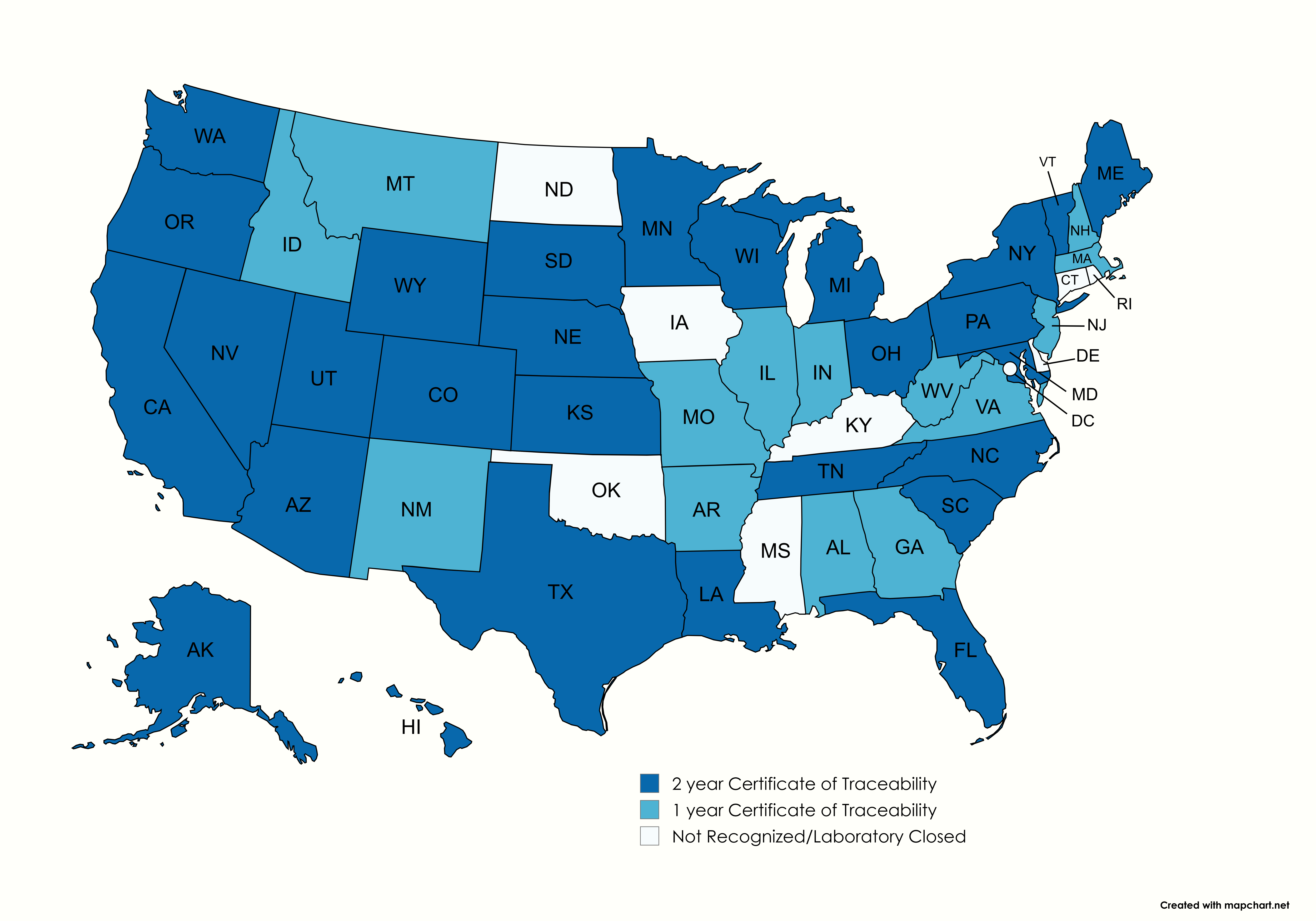Summary
The State Standards Program, now known as the Office of Weights and Measures (OWM)'s Laboratory Metrology Program, was established by the U.S. Congress in 1965 as part of its continuing support to the U.S. state measurement system. The program is designed to provide technical guidance, support, and assistance to U.S. state legal metrology laboratories to ensure accurate and traceable measurements are conveyed from NIST to the local jurisdictions. This includes a state laboratory recognition service that evaluates the performance and ensures the traceability of the measurement scope for state legal metrology laboratories that perform weights and measures calibration services. First published in 1985, NIST Handbook 143 continues to serve as the performance standard for the voluntary participation of the state calibration laboratories to be officially recognized by OWM's Laboratory Metrology Program.
Description
State legal metrology laboratories that have demonstrated evidence of metrological traceability to NIST Handbook 143 requirements and as required in their state and local jurisdictions can be officially recognized by OWM's Laboratory Metrology Program. In 2025, 42 states received official OWM laboratory recognition with either a one- or two-year Certificate of Metrological Traceability.

All participating state metrology laboratories undergo annual technical assessments to evaluate quality management systems, internal audits, management reviews, internal technical audits, and measurement control data. Each state metrology laboratory that has received recognition has demonstrated the following:
- metrological traceability of its standards to the international system of units (SI)
- documented measurement uncertainties and calibration intervals
- submitted a quality management system
- use of documented measurement procedures and suitable measurement assurance
- successfully completed prior OWM metrology training and proficiency tests
The complete details and full scope of each state's Certificate of Metrology Traceability are provided here.
A significant impact of laboratory recognition by OWM's Laboratory Metrology Program over ISO/IEC 17025 accreditation alone is that OWM annually targets the technical analysis related to specific metrology services (e.g., mass, volume transfer, length tape, time services) for the individual state.
When specific problems are identified, OWM conducts a national-level analysis to consider their impacts on the national measurement system. This analysis includes facility audits, software verification and validation, succession planning, measurement assurance, uncertainties, and metrological traceability. Any identified national or regional findings are then incorporated back into the current curriculum of the Laboratory Metrology Training Program.
Furthermore, the model weights and measures laws in NIST Handbook 130 often require state weights and measures programs to ensure metrological traceability to International System of Units (SI). The model laws also indicate that calibration laboratory recognition or accreditation provides demonstrated evidence of metrological traceability. Although the Laboratory Recognition Program is operated independently from the NIST National Voluntary Laboratory Accreditation Program (NVLAP) and does not provide formal accreditation according to International Organization for Standardization (ISO) standards, the general (ISO/IEC 17025) and technical criteria used in both programs are nearly identical. See the State Laboratory Program and NVLAP Accreditation FAQs for more information.

